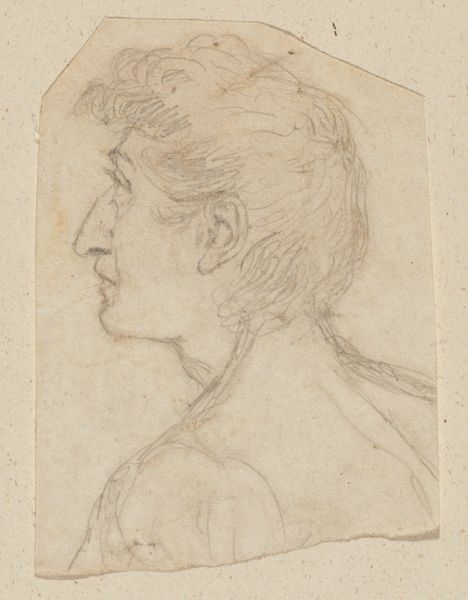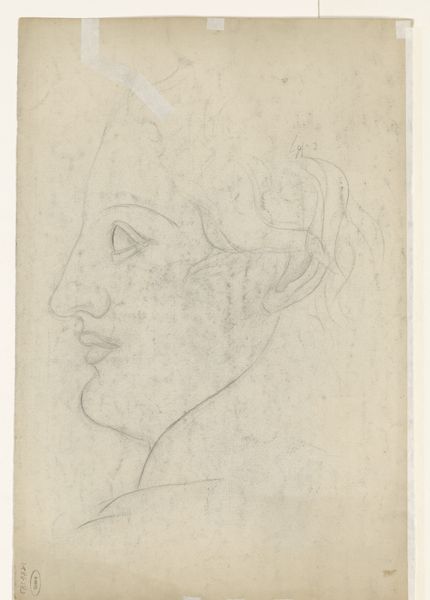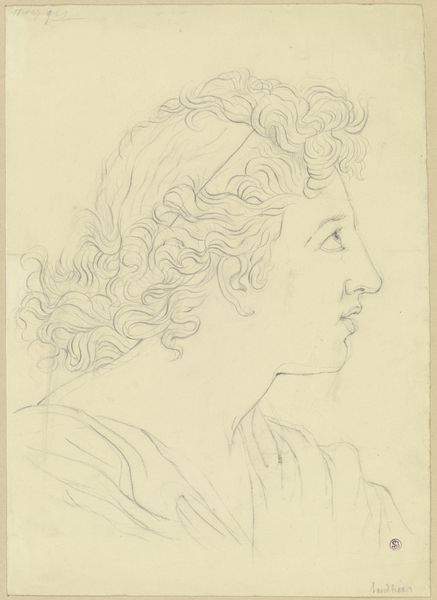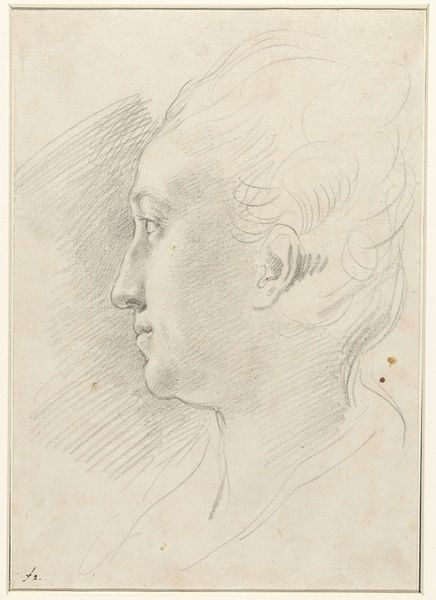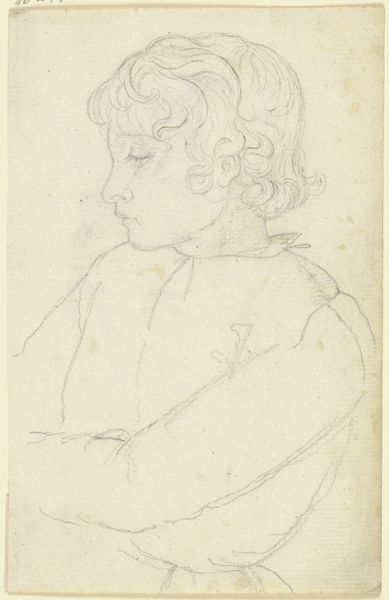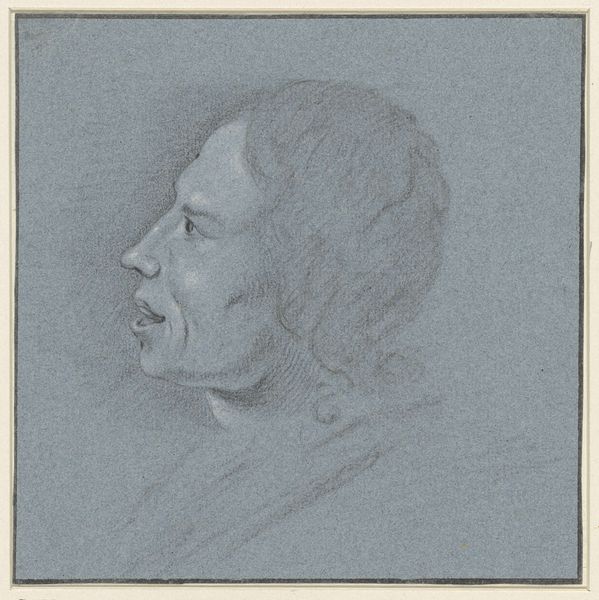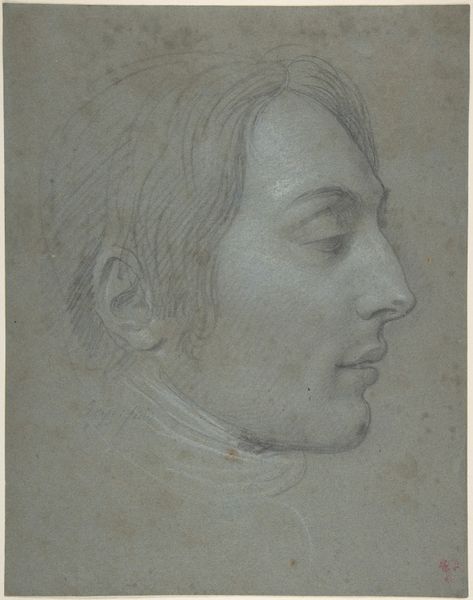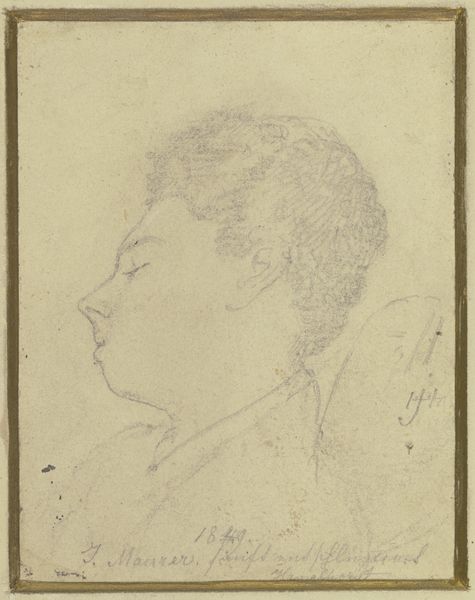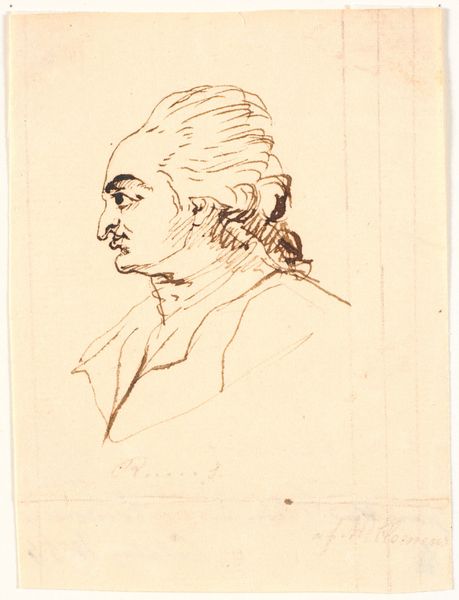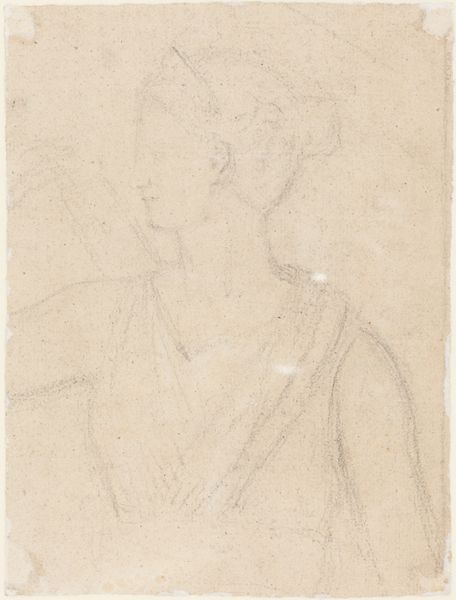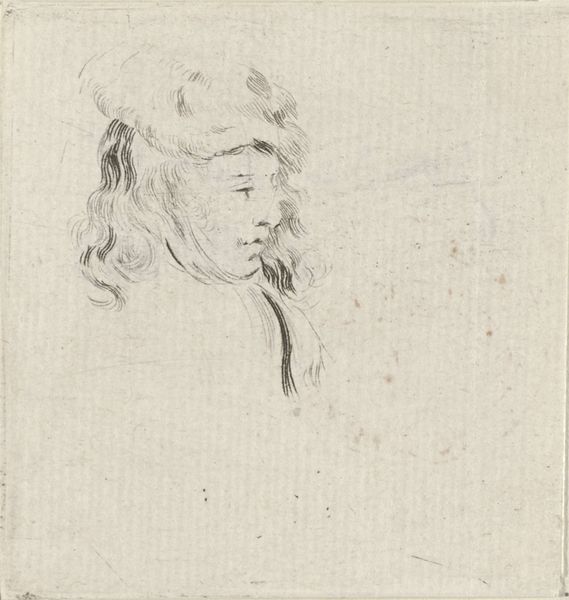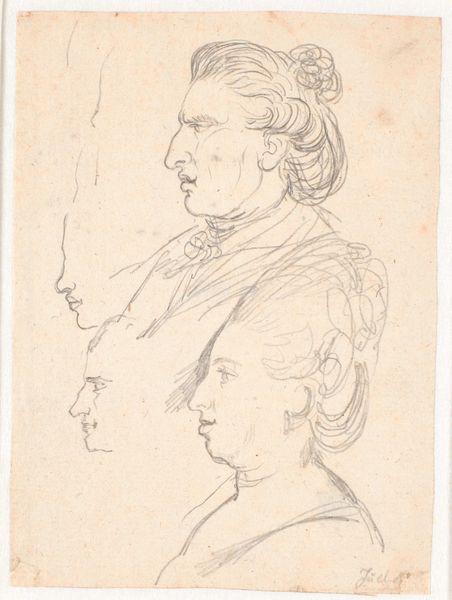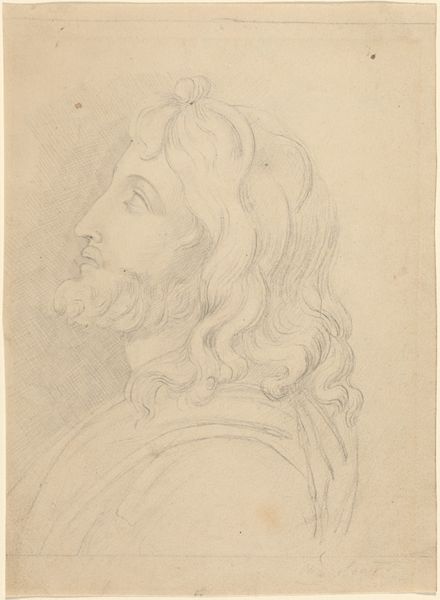
Dimensions: 215 mm (height) x 156 mm (width) (bladmaal)
Editor: Here we have a pencil drawing entitled "Et hoved af en mand set skråt bagfra," or "Head of a Man Seen from the Back," by Nicolai Abildgaard, dating roughly from 1743 to 1809. It's striking how minimal the lines are, and yet they manage to capture so much about the subject. What jumps out at you about this drawing? Curator: I'm immediately drawn to the materiality of the work. Notice the paper itself—its texture, the visible wear around the edges. This wasn’t created in a vacuum. Consider where the paper might have come from, the tools Abildgaard used to create this. Editor: That's a great point, it really brings you into the period! How do you think the availability, or perhaps the limitations, of materials impacted the artistic output? Curator: Precisely! Access to specific grades of pencil, the very cost of paper during that era, would inevitably dictate who could produce such work, and for what purpose. Was it a study? A preliminary sketch for a larger composition? Knowing this helps us understand its value, beyond pure aesthetics. Also consider who owned such drawings, and the means they possessed that allowed them access to this image. Editor: So, thinking about the process itself allows us to understand not just the artistic intent, but also the social context in which it was made? Curator: Exactly. It shifts the focus from a purely aesthetic appreciation to understanding the artwork as a product of labor, resources, and societal structures. Editor: That’s fascinating. I hadn't really considered the social implications tied to something as seemingly simple as paper and pencil. Thanks for pointing that out! Curator: It is a reminder that artworks aren’t just images but traces of material processes embedded in a larger web of socio-economic relations.
Comments
No comments
Be the first to comment and join the conversation on the ultimate creative platform.
